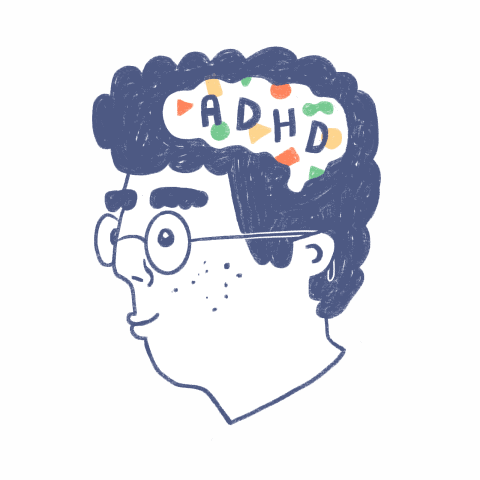As someone who lives with attention deficit hyperactivity disorder, or ADHD, the following is a pretty typical morning for me: Wait, did I turn off the coffee pot? Where’s my phone? Have you seen my glasses? Oh shoot, I’m late for school. Great, the car needs gas. I forgot to make a lunch. Seriously, where is my phone? Okay, remember to breathe.
ADHD is categorized as a neurodevelopmental disorder that impacts attention, executive functions, organization and emotional regulation.
There are four main regions of the brain affected by ADHD: (1) the frontal cortex, which controls executive functions like planning and foresight, (2) the limbic system, which is responsible for emotional regulation, (3) the basal ganglia, which controls movement, cognition and learning, and (4) the reticular activating system, which controls the sleep-wake cycle. Additionally, ADHD brains are often deficient in the neurotransmitters norepinephrine and dopamine.
If you’re like me and not keen on scientific terminology, all of the jargon is simply to say that ADHD brains are structurally and functionally different than “neurotypical” brains.
Affecting approximately 5 to 8 per cent of the global population, ADHD is categorized by three primary characteristics: (1) inattention, (2) impulsivity and (3) hyperactivity. If left untreated, ADHD is a highly disruptive disorder impacting personal relationships, academic and interpersonal success, and sense of self — essentially, every aspect of one’s life.
Now, what I’ve given you here is basically the textbook definition of ADHD. The issue with this definition is that it frames ADHD as the sum of solely negative parts.
The problem is that ADHD affects the entire structure of the brain, and the brain is the epicentre of the person meaning that, for ADHD to be the sum of negative parts, people who have ADHD must also be, as a whole, the sum of negative parts. What a bummer, huh?

This negative framing of ADHD is often both internalized by and projected onto people with ADHD, leading to low levels of self-esteem. This can also lead to the development of other mental-health issues such as anxiety, mood disorders and obsessive-compulsive disorder.
For Isaac Driscoll, a third-year education student, growing up undiagnosed served as a hindrance to his own self-esteem.
“I was diagnosed with ADHD in my 20s. My whole life, I knew I was different from everyone else, and I often felt inadequate,” Driscoll said.
The feeling of being different from others was echoed by other folks with ADHD, including fourth-year education student Kira Toews.
“Until I was properly diagnosed, I thought it was just me. I thought there was something wrong with me, and I would ask myself, ‘Why can’t I be like everybody else?’” Toews said.
Often, when we are diagnosed with ADHD, we are told that we have — and ultimately, we are — a problem in need of correction, and this is emphasized in the diagnostic criteria that focus solely on the negative “symptoms” of ADHD.
Just imagine the possibilities if we constructed ADHD to be understood as a contribution rather than a deficit, emphasizing our exceptional abilities to create, emote and make a difference with our innovative thinking patterns.
ADHD doesn’t just have negative effects — there are also substantial benefits that are often referred to as ADHD “superpowers.” These enhanced abilities include exceptional problem solving, creativity and innovative thinking, advanced capacity for compassion and empathy. Those with ADHD can also possess unique memory and astute observation skills, the ability to hyperfocus, energy and a childlike zest for life, and highly resilient levels of perseverance — among other traits.
For Toews, she says the biggest contribution of people with ADHD to the world is their increased capacity for creativity and empathy. And Meg Land — a fourth-year Saskatchewan Urban Native Teacher Education Program, or SUNTEP, student — explains that she sees more positive aspects to her ADHD than negative.
“It’s an advantage in that it makes people more interesting and creative. I think the only negative to ADHD is how people see it and how we have to navigate things because of those views,” Land said.
There is a massive difference between telling an adult or a child that they are broken or that they are exceptional. This difference is not only pivotal for folks who have ADHD in their construction of self but also important for those who don’t have ADHD as it allows them to understand an existence that is different from their own experience.
The positives that come with ADHD are the passion, empathy, creativity, innovation, spontaneity, the ability to feel fully and love greatly, and the sheer colourful uniqueness of it all. I wouldn’t trade it for anything, not for a second.
—
Ashlynn Weisburg
Graphic: Jaymie Stachyruk / Graphics Editor